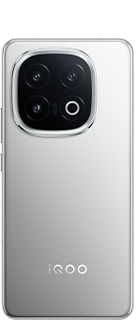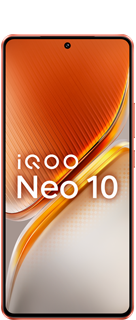Electricity: Powering the Modern World ⚡

Electricity is one of the most transformative discoveries in human history, fundamentally changing the way we live, work, and interact with our environment. From lighting our homes to powering industries and advancing communication technologies, electricity is the backbone of modern civilization. This article delves into the history, development, and impact of electricity, exploring how it became a driving force in shaping the contemporary world.

The Discovery and Development of Electricity
The journey of electricity from a mysterious natural phenomenon to a controlled and essential resource involved many brilliant minds and key milestones:
Early Observations: Ancient civilizations, such as the Greeks, were aware of static electricity, which they observed by rubbing amber against fur to attract lightweight objects. However, a comprehensive understanding of electricity was far from their grasp.
William Gilbert: In the 1600s, English scientist William Gilbert coined the term "electricus" to describe the force that materials like amber exert after being rubbed. His work laid the foundation for future studies in electricity and magnetism.
Benjamin Franklin: In the mid-1700s, American polymath Benjamin Franklin conducted experiments with electricity, most famously his kite experiment in 1752. He demonstrated that lightning is a form of electrical discharge and introduced concepts like the positive and negative charges.
Alessandro Volta: In 1800, Italian physicist Alessandro Volta invented the voltaic pile, the first chemical battery capable of producing a steady electric current. This invention was crucial for providing a continuous source of electricity for experiments.
Michael Faraday: In the early 19th century, English scientist Michael Faraday discovered electromagnetic induction, the principle behind the electric transformer and generator. His work made it possible to generate electricity mechanically, paving the way for practical applications.
Thomas Edison and Nikola Tesla: The late 19th century saw significant advancements in electricity due to the contributions of Thomas Edison and Nikola Tesla. Edison developed the direct current (DC) electrical system and invented the electric light bulb, while Tesla pioneered alternating current (AC) technology, which became the standard for power transmission due to its efficiency over long distances.
Key Dates in the History of Electricity
- 1600: William Gilbert's studies lay the groundwork for understanding electricity.
- 1752: Benjamin Franklin's kite experiment demonstrates the electrical nature of lightning.
- 1800: Alessandro Volta invents the voltaic pile, the first battery.
- 1831: Michael Faraday discovers electromagnetic induction.
- 1879: Thomas Edison patents the practical electric light bulb.
- 1887: Nikola Tesla develops the AC induction motor.

Types and Applications of Electricity
Electricity manifests in various forms and has countless applications that touch every aspect of modern life:
- Static Electricity: This type of electricity is the result of an imbalance between positive and negative charges in objects. It is observed in everyday phenomena, such as static cling or lightning.
- Current Electricity: This is the flow of electric charge through a conductor. It can be categorized into:
1- Direct Current (DC): Electric charge flows in one direction. It is used in batteries electronics, and some industrial applications.
2- Alternating Current (AC) Current (AC): Electric charge changes direction periodically. It is the standard for power distribution in homes and industries due to its efficiency in long-distance transmission.

Electric Power Generation:
Electricity is generated through various methods, including:
- Thermal Power: Using heat from fossil fuels or nuclear reactions to produce steam that drives turbines.
- Hydroelectric Power: Utilizing the potential energy of water stored in dams to drive turbines.
- Wind Power: Converting kinetic energy from wind into electricity using wind turbines.
- Solar Power: Using photovoltaic cells to convert sunlight directly into electricity.
- Geothermal Power: Harnessing heat from the Earth's interior to generate electricity.

Applications of Electricity:
The versatility of electricity allows it to be used in numerous applications, such as:
- Lighting: From incandescent bulbs to energy-efficient LEDs, electricity illuminates homes, streets, and cities.
- Heating and Cooling: Electric heaters, air conditioners, and refrigeration systems rely on electricity.
- Communication: Telephones, radio, television, and the internet are powered by electricity, enabling global connectivity.
- Transportation: Electric vehicles, trains, and subways are becoming increasingly common, promoting sustainable transportation.
- Medical Equipment: Life-saving devices like X-ray machines, MRI scanners, and ventilators operate on electricity.
The Impact of Electricity on Society
The widespread availability and use of electricity have had profound effects on every aspect of human life:
- Economic Growth: Electricity has powered industrialization, enabling mass production and improving efficiency in manufacturing processes. It has also facilitated the growth of new industries, such as information technology and telecommunications.
- Improved Quality of Life: Electric appliances and devices have revolutionized household chores, healthcare, education, and entertainment, enhancing the quality of life for millions of people.
- Urbanization: The availability of electric power has driven urban development, making cities more livable and efficient. Street lighting, public transportation, and infrastructure development are all reliant on electricity.
- Environmental Impact: While electricity has many benefits, its generation, especially from fossil fuels, has significant environmental implications. The shift towards renewable energy sources aims to mitigate these impacts and promote sustainability.
- Global Connectivity: Electricity has enabled the development of communication networks that connect people across the globe. The internet, powered by electricity, has transformed how we access information, communicate, and conduct business.
Conclusion
Electricity is a cornerstone of modern civilization, driving technological advancements and transforming every facet of human life. From its early discovery and experimentation to its widespread application and integration into daily life, electricity has proven to be an indispensable resource. As we continue to innovate and seek sustainable energy solutions, the role of electricity will remain central to our progress and prosperity.
The story of electricity is one of curiosity, ingenuity, and relentless pursuit of knowledge. It is a testament to human creativity and the profound impact that scientific discoveries can have on society. As we move forward, the lessons learned from the development and utilization of electricity will guide us towards a brighter, more connected, and sustainable future.
#InventionsThatChangedTheWorldPart3
Follow For More Tech Related Threads @NITIN
Nitin Panwar
Moderator
Please sign in
Login and share






















